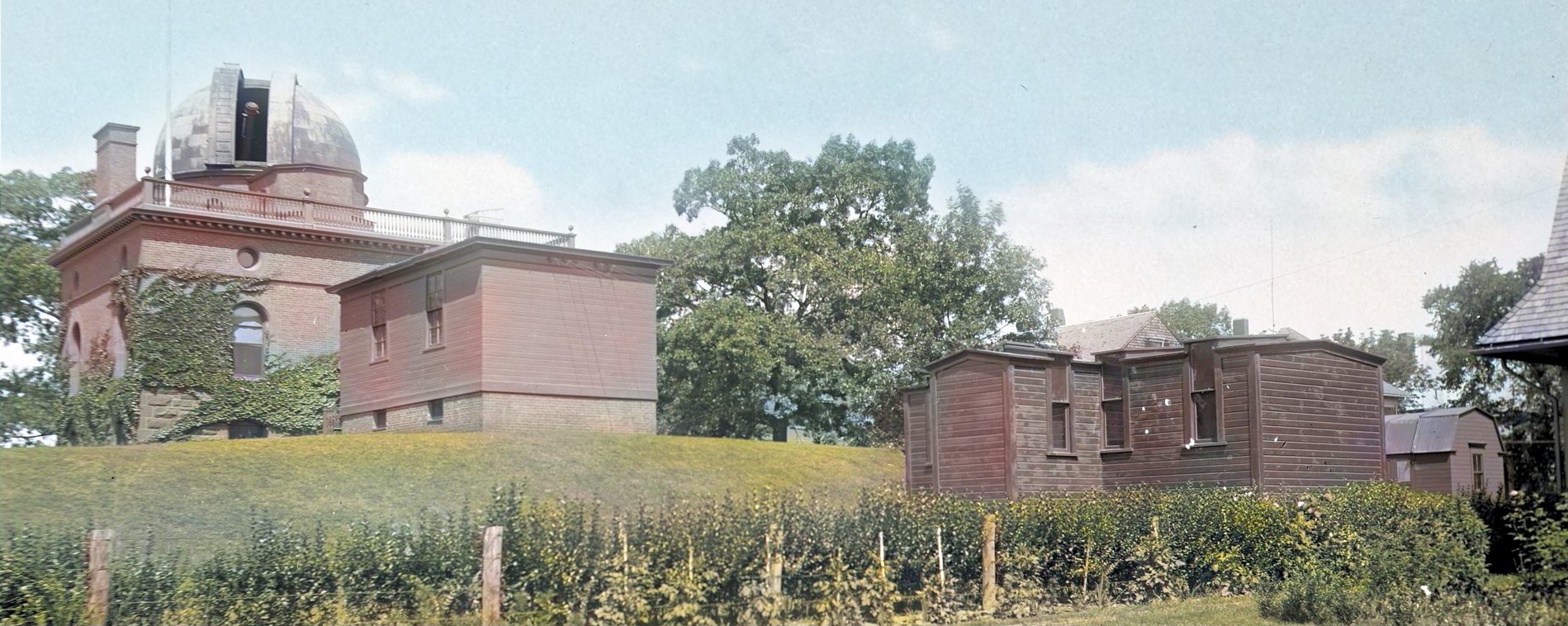An amusing bit of trivia has spurred this week’s ‘Picture Postals’, but has led me to a subtle but potentially quite deep observation about the nature of time in Lovecraft’s Providence.
One of the two precision clocks at the heart of the Ladd Observatory was called “Howard”, which might have tickled Howard Phillips Lovecraft when he was observing and studying there. As many will know, as a youth he lived nearby, had his own key, and was permitted free access at any time. The clock was a “Howard Astronomical Regulator No. 74”, to be precise.
The “Howard” sidereal clock (measuring stellar or cosmic time) was and still is accompanied in the Ladd’s Clock Vault by a “Molyneaux mean time clock” (measuring solar time, or everyday ‘civil time’).
Once the Ladd was opened and running, from September 1893 Professor Upton of the Observatory operated a wired…
system that transmitted telegraph time signals from precision clocks at Ladd Observatory throughout Providence and to other nearby cities.
The source-time for the signal was calculated by Ladd’s observation of the stars, thus giving exact ‘cosmic’ time. Knowing this gives a certain subtle spin to Lovecraft’s famous phrase of “when the stars were right”. In Providence, the stars were always right, since the stars (and presumably “Howard” as the site’s master star-clock) set the exact time for the city and its neighbours.
For the 1895 academic year Brown University invested in their own $100 “Howard”, precisely set by the Ladd Observatory time…
A very valuable Howard clock has recently been placed in the Steward’s office. It is regulated by Ladd Observatory standard time, and is thus kept as near correct as possible. The clock is connected with the bell-ringer’s room, so that now the college bell will be rung at exactly the right time.
The Ladd’s time-wires also went down to City Hall and to all points, via the services of a time-distribution contractor named the Rhode Island Protective Company.
Soon everyone had their exact time by the stars. One wonders if the wires are still there, presumably having gone down the hill under the earth rather than on poles that might be toppled in high winds. A possibility for a Mythos writer to explore, perhaps.
Here we see my colourising of an unusual view of the back of the Ladd, which corresponds with Lovecraft’s own isometric view as drawn in his boyish hand in 1904.
City documents show that the source of the city’s 1893-1916 wired time-transmissions was the square wooden-clad extension block, in which a “Seigmuller transit instrument” and the wired transmission unit was housed. Lovecraft’s drawing shows the observation-hole shutters on the block’s roof.
Note that Lovecraft has also drawn the path out back, which goes through an obvious gate to the small building with the curved roof. This can also be seen on the above photo, behind the later wireless transmissions hut (as war approached, the U.S. Naval Observatory transmitted exact time to the nation by radio from 1916 and thus took over Ladd’s local role).
What the small building with the curving roof was appears to be unknown, and later city plans for Ladd do not encompass it. But obviously Lovecraft thought it important enough to include on his drawing and there it appears to be part of the site. My guess would be it was a teaching room for the first-year Brown University Astronomy students, something that Professor Upton was keen to include from the first. Possibly with its own roof-flaps which could open to allow night observing, items which seem to be present on Lovecraft’s drawing of it. If so, being a hut-like structure with a stove for warmth, it would also be the obvious place to double-up as an impromptu kitchen — for making a hot early breakfast after a long cold night of traversing the astral coldness.







The inauguration of the Ladd Observatory’s time service was noted in the 27 September 1893 issue of the Jewelers’ Circular and Horological Review under the headline “Providence Has Local Standard Time”. The story reported that “At 3 o’clock last Wednesday afternoon all the electric clocks in the city were set by this standard which varied but a small part of a second from that of the Cambridge Observatory.” The article makes no mention of the wonderful Howard clock.
Thanks Horace. I corrected a brain-fuzz mistake I made, which was to refer to the colourised panorama picture as earlier. I meant later.